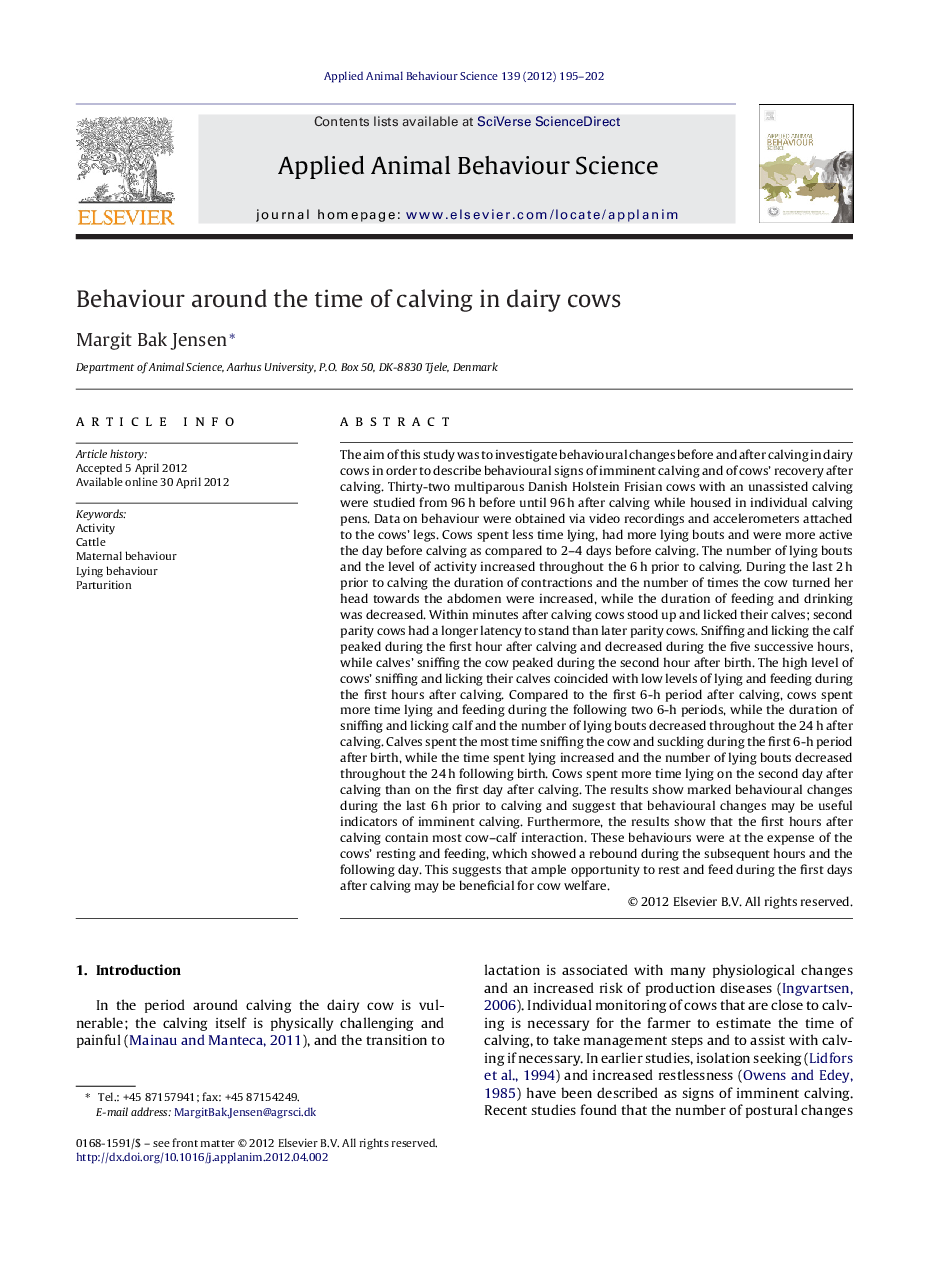| Article ID | Journal | Published Year | Pages | File Type |
|---|---|---|---|---|
| 6379732 | Applied Animal Behaviour Science | 2012 | 8 Pages |
Abstract
The aim of this study was to investigate behavioural changes before and after calving in dairy cows in order to describe behavioural signs of imminent calving and of cows' recovery after calving. Thirty-two multiparous Danish Holstein Frisian cows with an unassisted calving were studied from 96Â h before until 96Â h after calving while housed in individual calving pens. Data on behaviour were obtained via video recordings and accelerometers attached to the cows' legs. Cows spent less time lying, had more lying bouts and were more active the day before calving as compared to 2-4 days before calving. The number of lying bouts and the level of activity increased throughout the 6Â h prior to calving. During the last 2Â h prior to calving the duration of contractions and the number of times the cow turned her head towards the abdomen were increased, while the duration of feeding and drinking was decreased. Within minutes after calving cows stood up and licked their calves; second parity cows had a longer latency to stand than later parity cows. Sniffing and licking the calf peaked during the first hour after calving and decreased during the five successive hours, while calves' sniffing the cow peaked during the second hour after birth. The high level of cows' sniffing and licking their calves coincided with low levels of lying and feeding during the first hours after calving. Compared to the first 6-h period after calving, cows spent more time lying and feeding during the following two 6-h periods, while the duration of sniffing and licking calf and the number of lying bouts decreased throughout the 24Â h after calving. Calves spent the most time sniffing the cow and suckling during the first 6-h period after birth, while the time spent lying increased and the number of lying bouts decreased throughout the 24Â h following birth. Cows spent more time lying on the second day after calving than on the first day after calving. The results show marked behavioural changes during the last 6Â h prior to calving and suggest that behavioural changes may be useful indicators of imminent calving. Furthermore, the results show that the first hours after calving contain most cow-calf interaction. These behaviours were at the expense of the cows' resting and feeding, which showed a rebound during the subsequent hours and the following day. This suggests that ample opportunity to rest and feed during the first days after calving may be beneficial for cow welfare.
Related Topics
Life Sciences
Agricultural and Biological Sciences
Animal Science and Zoology
Authors
Margit Bak Jensen,
